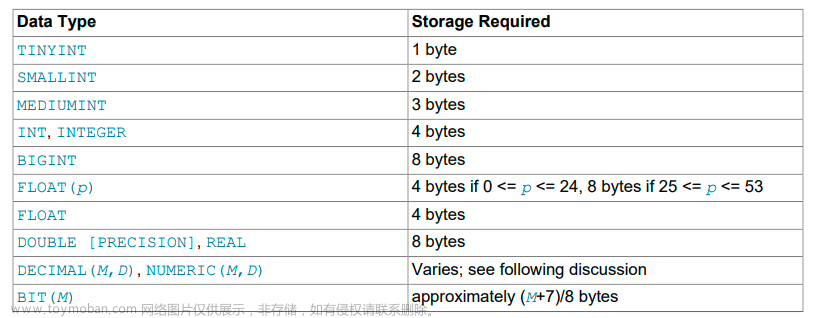Deadlocks的定义
A deadlock is a situation where different transactions are unable to proceed because each holds a lock that the other needs. Because both transactions are waiting for a resource to become available, neither ever release the locks it holds.
优化deadlocks的一般思路
To reduce the possibility of deadlocks, use transactions rather than LOCK TABLES statements; keep transactions that insert or update data small enough that they do not stay open for long periods of time; when different transactions update multiple tables or large ranges of rows, use the same order of operations (such as SELECT ... FOR UPDATE) in each transaction; create indexes on the columns used in SELECT ... FOR UPDATE and UPDATE ... WHERE statements.
Deadlocks与isolation level
The possibility of deadlocks is not affected by the isolation level, because the isolation level changes the behavior of read operations, while deadlocks occur because of write operations.
死锁检测
When deadlock detection is enabled (the default) and a deadlock does occur, InnoDB detects the condition and rolls back one of the transactions (the victim).【开启了的化,就主动检测,触发处理】
If deadlock detection is disabled using the innodb_deadlock_detect variable, InnoDB relies on the innodb_lock_wait_timeout setting to roll back transactions in case of a deadlock.【没开启的化,就只能等超时】
Thus, even if your application logic is correct, you must still handle the case where a transaction must be retried. To view the last deadlock in an InnoDB user transaction, use SHOW ENGINE INNODB STATUS. If frequent deadlocks highlight a problem with transaction structure or application error handling, enable innodb_print_all_deadlocks to print information about all deadlocks to the mysqld error log.【如果经常遇到死锁,可以开通设置,将死锁信息输出到error log中】
死锁时,如何选择被放弃的事务
InnoDB tries to pick small transactions to roll back, where the size of a transaction is determined by the number of rows inserted, updated, or deleted.
具体而言,如何减少deadlock
You can cope【处理、对付】 with deadlocks and reduce the likelihood of their occurrence【发生、出现】 with the following techniques:
• At any time, issue SHOW ENGINE INNODB STATUS to determine the cause of the most recent deadlock. That can help you to tune your application to avoid deadlocks.【多复盘】
• If frequent deadlock warnings cause concern, collect more extensive debugging information by enabling the innodb_print_all_deadlocks variable. Information about each deadlock, not just the latest one, is recorded in the MySQL error log. Disable this option when you are finished debugging.---【尽可能收集死锁相关的信息】
• Always be prepared to re-issue a transaction if it fails due to deadlock. Deadlocks are not dangerous. Just try again.【收集后,多分析】
• Keep transactions small and short in duration to make them less prone to collision【碰撞、冲突】.【事务,应保持短小精悍】
• Commit transactions immediately after making a set of related changes to make them less prone to collision. In particular, do not leave an interactive mysql session open for a long time with an uncommitted transaction.【事务,应干净利索,不要拖泥带水】
• If you use locking reads (SELECT ... FOR UPDATE or SELECT ... FOR SHARE), try using a lower isolation level such as READ COMMITTED.【满足要求的隔离级别,不过分要求高级别】
• When modifying multiple tables within a transaction, or different sets of rows in the same table, do those operations in a consistent order each time. Then transactions form well-defined queues and do not deadlock. For example, organize database operations into functions within your application, or call stored routines, rather than coding multiple similar sequences of INSERT, UPDATE, and DELETE statements in different places.
• Add well-chosen indexes to your tables so that your queries scan fewer index records and set fewer locks. Use EXPLAIN SELECT to determine which indexes the MySQL server regards as the most appropriate for your queries.【拥有合适的索引】
• Use less locking. If you can afford to permit a SELECT to return data from an old snapshot, do not add a FOR UPDATE or FOR SHARE clause to it. Using the READ COMMITTED isolation level is good here, because each consistent read within the same transaction reads from its own fresh snapshot.【少用锁】
• If nothing else helps, serialize your transactions with table-level locks. The correct way to use LOCK TABLES with transactional tables, such as InnoDB tables, is to begin a transaction with SET autocommit = 0 (not START TRANSACTION) followed by LOCK TABLES, and to not call UNLOCK TABLES until you commit the transaction explicitly.Table-level locks prevent concurrent updates to the table, avoiding deadlocks at the expense of less responsiveness for a busy system.
• Another way to serialize transactions is to create an auxiliary 【辅助的】“semaphore” table that contains just a single row. Have each transaction update that row before accessing other tables. In that way, all transactions happen in a serial【连续的;顺序排列的】 fashion. Note that the InnoDB instant deadlock detection algorithm also works in this case, because the serializing lock is a row-level lock. With MySQL table-level locks, the timeout method must be used to resolve deadlocks.
死锁相关的系统表(或SQL)
----performance_schema.data_locks;
----performance_schema.data_lock_waits;
----SELECT `count` FROM INFORMATION_SCHEMA.INNODB_METRICS WHERE NAME="lock_deadlocks";文章来源:https://www.toymoban.com/news/detail-842681.html
文章来源地址https://www.toymoban.com/news/detail-842681.html
到了这里,关于MySQL 8.0 Reference Manual(读书笔记68节--Deadlocks)的文章就介绍完了。如果您还想了解更多内容,请在右上角搜索TOY模板网以前的文章或继续浏览下面的相关文章,希望大家以后多多支持TOY模板网!







